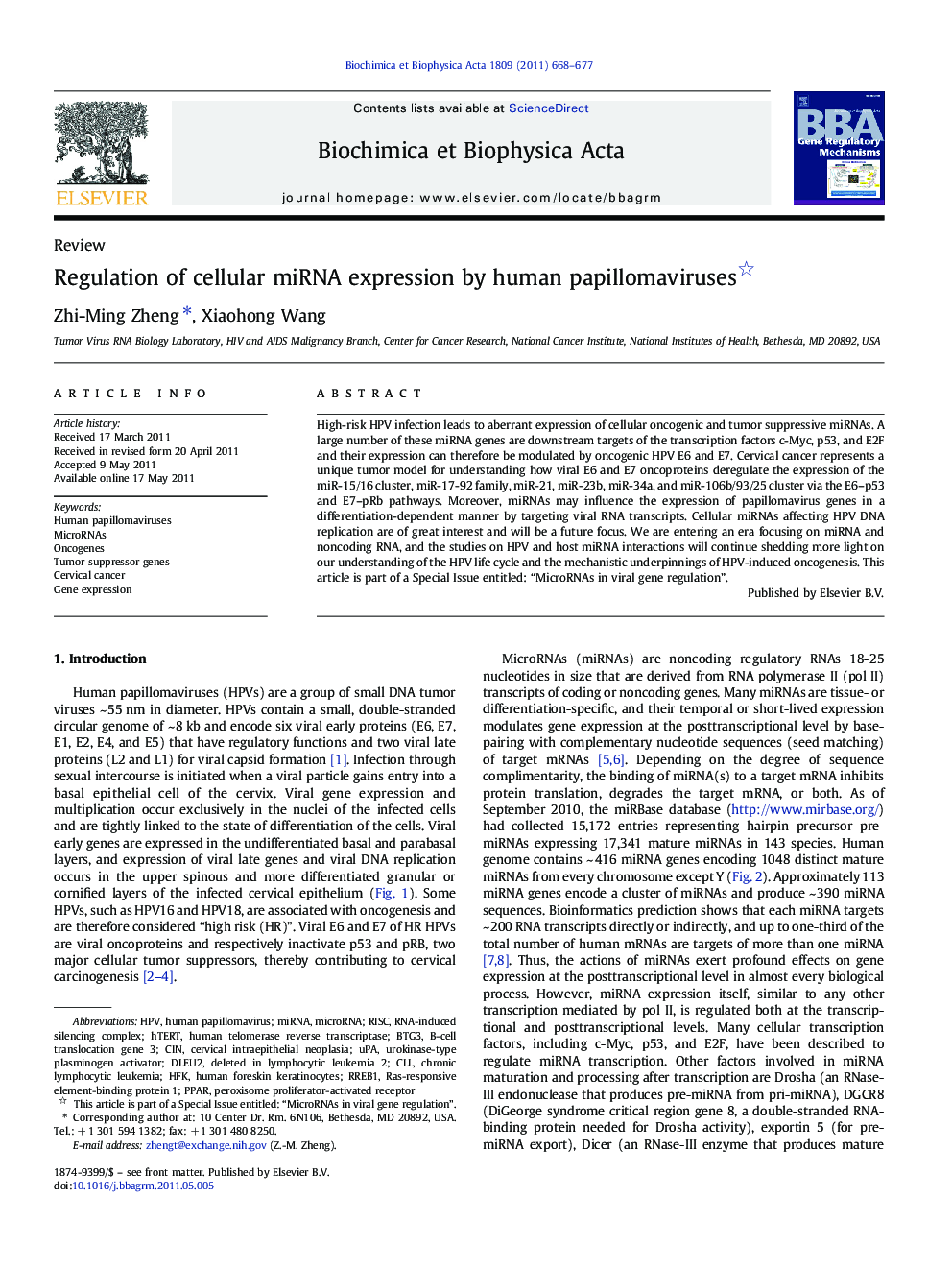| Article ID | Journal | Published Year | Pages | File Type |
|---|---|---|---|---|
| 1946608 | Biochimica et Biophysica Acta (BBA) - Gene Regulatory Mechanisms | 2011 | 10 Pages |
High-risk HPV infection leads to aberrant expression of cellular oncogenic and tumor suppressive miRNAs. A large number of these miRNA genes are downstream targets of the transcription factors c-Myc, p53, and E2F and their expression can therefore be modulated by oncogenic HPV E6 and E7. Cervical cancer represents a unique tumor model for understanding how viral E6 and E7 oncoproteins deregulate the expression of the miR-15/16 cluster, miR-17-92 family, miR-21, miR-23b, miR-34a, and miR-106b/93/25 cluster via the E6–p53 and E7–pRb pathways. Moreover, miRNAs may influence the expression of papillomavirus genes in a differentiation-dependent manner by targeting viral RNA transcripts. Cellular miRNAs affecting HPV DNA replication are of great interest and will be a future focus. We are entering an era focusing on miRNA and noncoding RNA, and the studies on HPV and host miRNA interactions will continue shedding more light on our understanding of the HPV life cycle and the mechanistic underpinnings of HPV-induced oncogenesis. This article is part of a Special Issue entitled: “MicroRNAs in viral gene regulation”.
Research Highlights► Oncogenic HPV infection deregulates the expression of oncogenic and tumor suppresive miRNAs via E6-p53 and E7-pRb pathways. ► Cellular miRNAs may influence the expression of papillomavirus genes in a differentiation-dependent manner by targeting viral RNAs. ► Cervical cancer provides a unique cancer model for understanding the interplays between HPV and host miRNAs.
